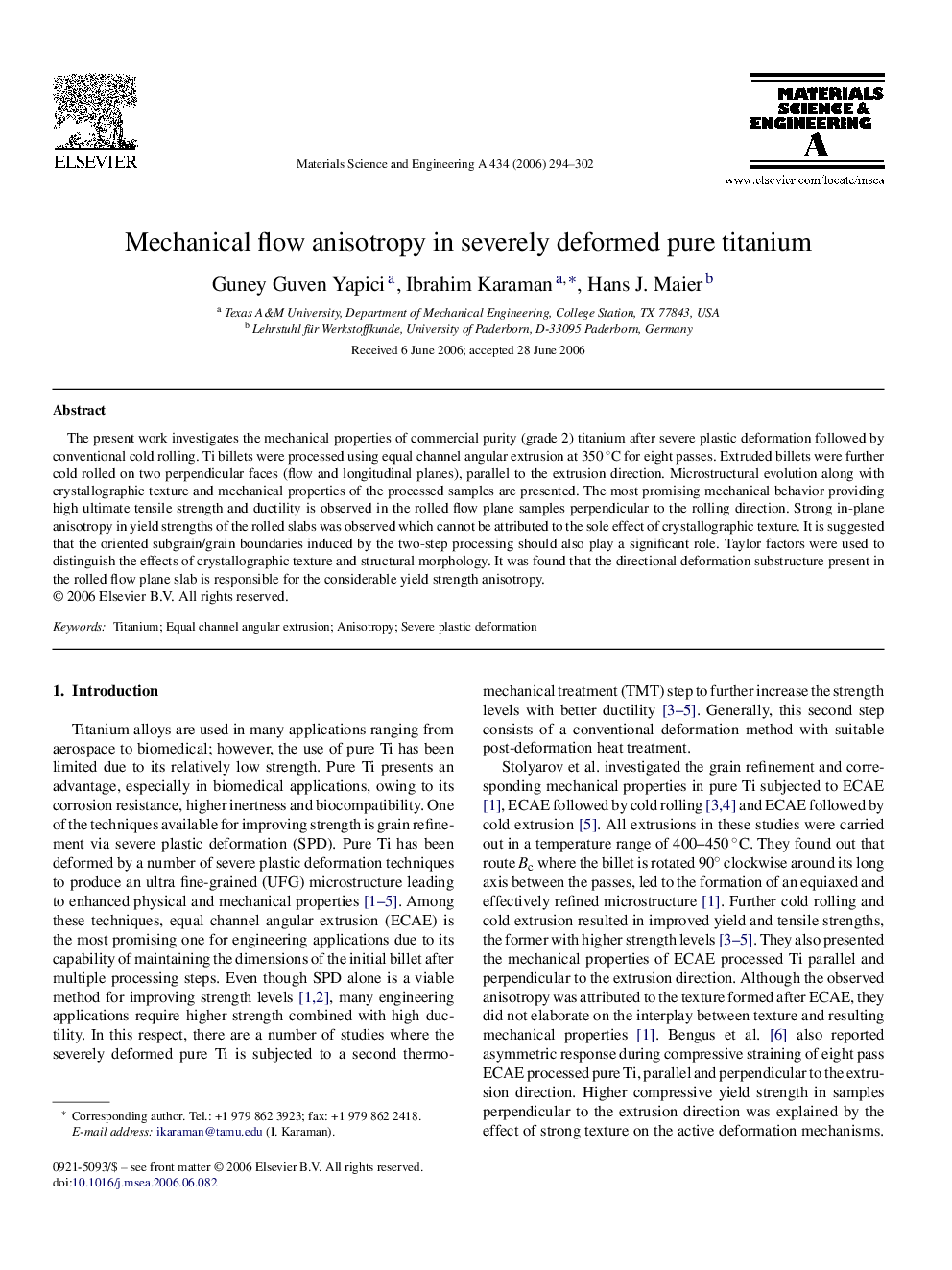| Article ID | Journal | Published Year | Pages | File Type |
|---|---|---|---|---|
| 1584923 | Materials Science and Engineering: A | 2006 | 9 Pages |
The present work investigates the mechanical properties of commercial purity (grade 2) titanium after severe plastic deformation followed by conventional cold rolling. Ti billets were processed using equal channel angular extrusion at 350 °C for eight passes. Extruded billets were further cold rolled on two perpendicular faces (flow and longitudinal planes), parallel to the extrusion direction. Microstructural evolution along with crystallographic texture and mechanical properties of the processed samples are presented. The most promising mechanical behavior providing high ultimate tensile strength and ductility is observed in the rolled flow plane samples perpendicular to the rolling direction. Strong in-plane anisotropy in yield strengths of the rolled slabs was observed which cannot be attributed to the sole effect of crystallographic texture. It is suggested that the oriented subgrain/grain boundaries induced by the two-step processing should also play a significant role. Taylor factors were used to distinguish the effects of crystallographic texture and structural morphology. It was found that the directional deformation substructure present in the rolled flow plane slab is responsible for the considerable yield strength anisotropy.
